SWIMMING WITH THE ZANDER
2014.02.22 12:31

Zander fishing in the winter and more...
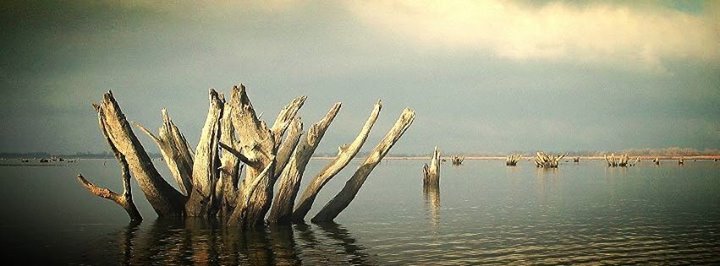
The Zander season closes in Hungary on the 1st of March. If the conditions are good and the waters are fishable February offers best chances to catch Zander on the fly. Not in the rivers however - as most of the hot spots are just too deep to get down with the fly - but in the lakes.
The Tisza-lake - besides the Danube - is my favorite place to fish. Since my childhood till my mid twenties I had spent the summers there. It is not a real lake rather a reservoir. A huge dam was built on the river Tisza in the ‘70s and upstream from the dam a huge body of water arose on both sides of the river. It is approximately 40 km long and up to 6 km wide. But it is not a contiguous open surface. Canals and islands divide it into dozens of smaller lakes and backwaters covered with heavy vegetation. The average depth (apart from the main river) is 1-2 meters. What makes it special is that at the end of October the water level is lowered by ca. 1 meter. This means that all the fish gather in the deeper channels. It is not the paradise that it used to be once but you can still have great days of fishing if you hit it right.
The lowered water also means that most parts are impossible to reach. You have to be prepared for some serious suffering to get to the hot spots. The real high season is during the two weeks when the water is lowered. After reaching the winter level it gets much less crowded.
What we do this time of the year is getting to one of the harbors on the main river, cross the Tisza, carry the watercrafts across an island and then through a small channel we can reach one of these hot spots.
We did exactly this last Wednesday. Peter and Mike were the two accomplices. They use kayaks and I have a small inflatable boat. It is a bit heavy to carry around alone to longer distances so the guys helped me to get it through the woods while they were towing their kayaks. When we reached the point where the small channel was deep enough we launched our watercrafts. There were two abandoned boats moored in the channel blocking our way out (this will be important later in the story). It took a couple of minutes to turn them sideways to pass.
After a couple of hundred meters of rowing we finally reached the end of the old backwater where the water gets deeper. It is still only 0.6 to 1 meter deep, full with logs, both standing and laying on the ground. Ideal habitat for pike and zander. As it is closed season for pike we tried to avoid them as well as we could, although they have finished spawning mid January here, obviously BEFORE the closed season started.
Peter and I fished 8 weights. He has the first ever T8 Deep Blue produced and I use the first Evil Black prototype. We cast floating lines, I prefer the Barrio SLX 8wt for this kind of fishing. I cut the tip back by 0.6 meters so it delivers big and heavy flies better. I can easily cast 25-27 meters the whole day long with this setup. The only problem is that if the fish takes on the first couple of meters it can be very hard to hook them. It is not the elasticity of the line but the thick head and the very thin running line don’t line up immediately and I think there is more slack in the system than with a normal WF. But even with this little drawback it still beats any line I have tried for this kind of fishing. Wire leaders are a must because of the pikes.
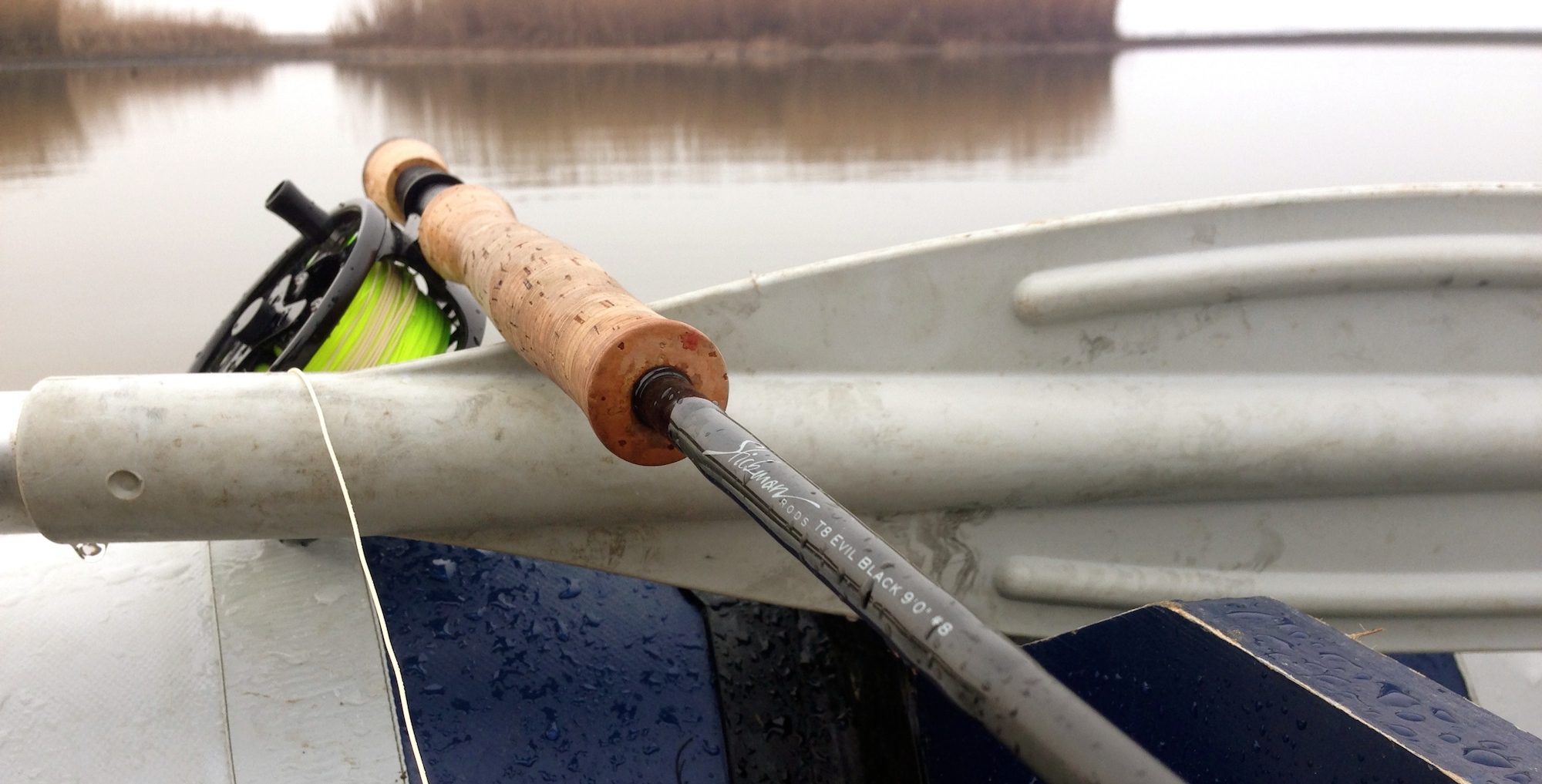
In the last season I fished a Popovics’ Hollow Semper Fleye variant. The tail is made either from saddle hackles (only the best will do!) or magnum zonker strips. Bucktail is used for the body in hollow fleye style. Instead of lead eyes I use lead wire for the head, covering it with the tying thread and epoxy. They are durable, move very nicely and have a great silhouette from every angle. I never tie pike or zander flies without weed guards.
The guys with the kayaks can move much faster so they were already fishing the far end of the area. I took a chartreuse-grey fly with a zonker strip from the flybox. Zonker strips seem to attract zander more than the long feathers and they were our target today.
I started to work my way up the backwater. I strongly believe that you can retrieve a fly from a fixed boat much more controlled than from a floating one. This may not be important when the fish are really on but on slower days it can mean the difference between blanking and catching a couple of fish. So I use a small weight to fix the boat, make a series of casts and then move over to an another place.
On the 3rd or 4th stop I made my first long cast towards a spot where some logs are laying on the ground parallel to each other. After a couple of strips I felt the characteristic sharp hit, the sure sign of a zander taking the fly. I tried to set the hook but my strip strike wasn’t the best. I managed to pull the fish on surface but after a couple of headshakes it said good bye.
I worked the area for a couple of minutes and then moved on to a shallower part. On the first cast I was into a fish again (most likely a pike) but lost it after a couple of swirls too. I usually loose very few fish. I only use hooks with smashed barbs and I actually think that as it penetrates deeper these hooks hold fish better. Half-hearted hooksets are more of a problem as in this case too.
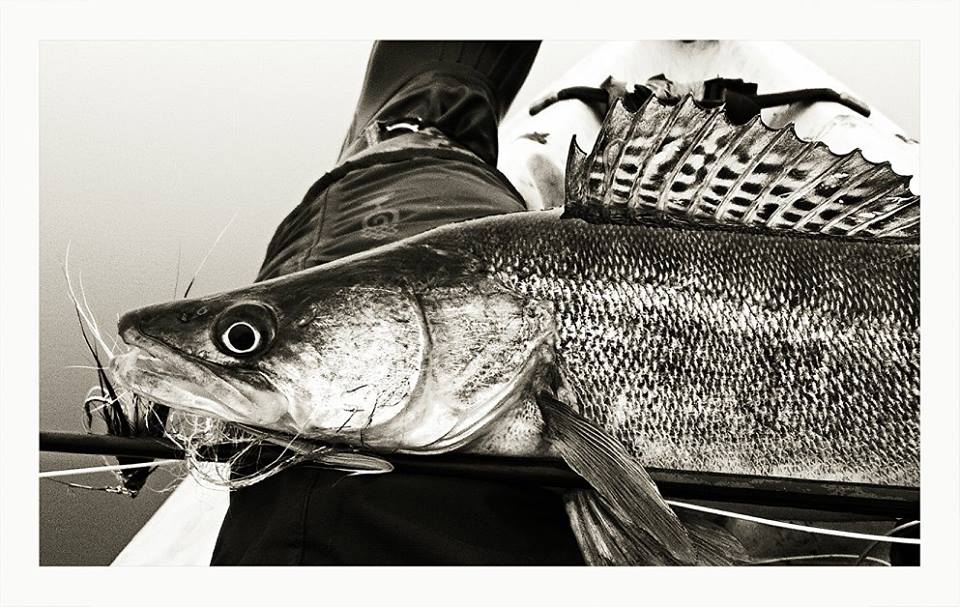
Peter sent me a couple of pictures of a zander and a pike he caught. This wasn’t much help to improve my mood either. I tried a couple of spots without any fish contact and returned to the place where I lost the zander before. On the third cast I was into a decent fish again but this one spat the hook again. I checked the point but it was perfect. Two more cast, fish on, a bit of rumbling on the surface and the hook got loose again. Unbelievable! I let my anger flow free and sweared like only Hungarians can do. I thought it would be better to have some rest so I ate my lunch.
I moved to another area where I could finally hook and release a pike around 65-70 cm. I really needed that. After having a couple of semi-contacts with some moody fish I returned to the zander hot spot again but this time I took a different position so I could work the few square meters where the fish seemed to gather from a different angle. I hoped that this will do the trick. And it actually did. After a couple of casts I had the take where I was expecting it. This time I was prepared and set the hook well. After playing the fish pretty aggressively I could land a decent zander. Peter made a couple of pics, we chatted for a while. I tried to fish the logs for half an hour or so but there was no more interest.
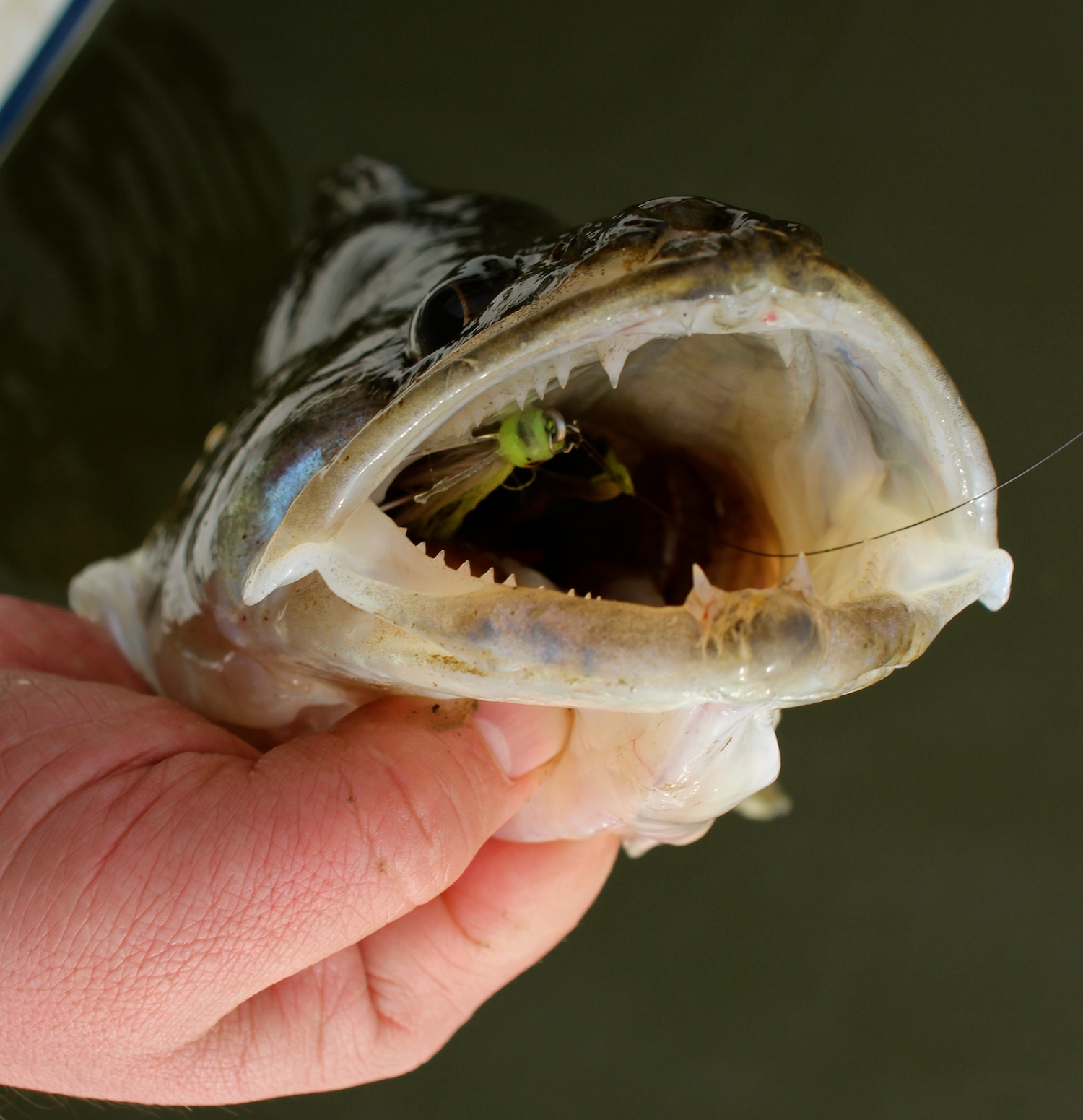
I know a lie in the backwater that always seems to hold a bigger pike, usually around one meter. If the pike is caught and taken in a couple of days a new fish will take the lie. We weren’t targeting them but I couldn’t resist to make a couple of casts, moved a fish the was following my fly creating a huge wake behind it. She did not take, only pushed the fly gently. I had couple of similar actions but it seemed like the fish had switched off for today.
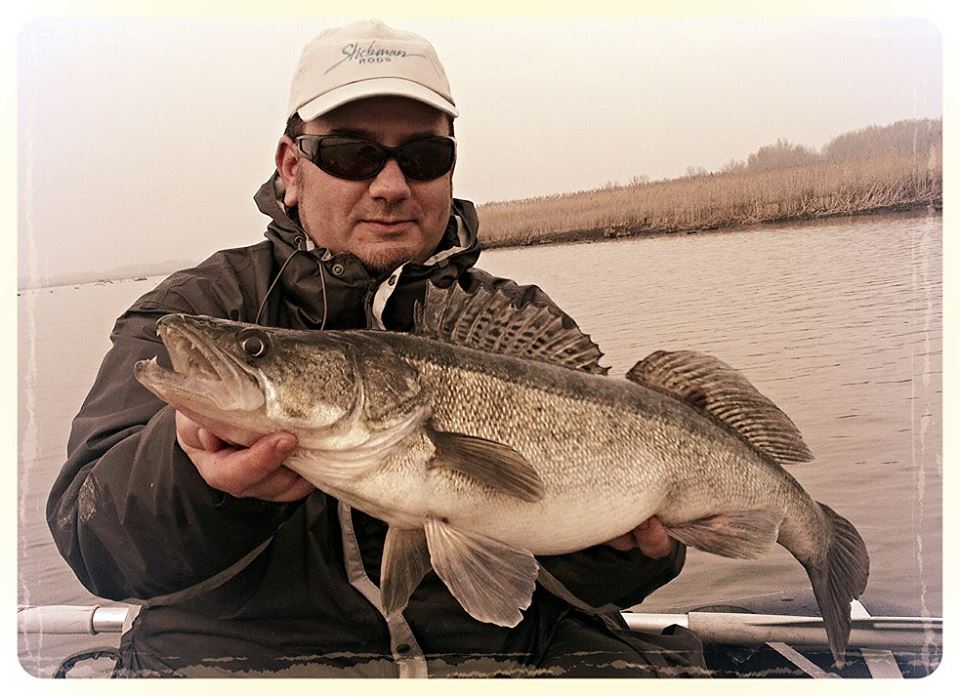
I never ever caught a fish after 4 pm. at this place. OK, the fact that most of the time I leave by then does not help but fishing really seems to slow down around and after sunset.
I told the guys that I will leave and wait for them on the island as I need more time to row my way out anyway. By the time I reached the two abandoned boats in the channel it was dusk. I had a great idea: I will tie my boat next to the wooden one blocking my way out and will carry my stuff out through the boat. This way I will avoid wallowing in the mud. So I tied the boats together, took ALL my stuff in BOTH of my hands and wanted to step into the other boat. There were a couple of problems though:
1. I had a virus infection a week before and I hasn’t been fully recovered at that point. My legs very pretty shaky the whole day long.
2. I have used the small inflatable boat maybe twice in the last 3 years and forgot how easy it is to push away.
3. Both my hands were full with stripping baskets, water bottles and similar.
So the inevitable has happened: in the instant my foot touched the other boat the inflatable slipped away and I lost my balance. Somehow I managed to throw the stuff from my hands into the other boat while falling and grabbed the edge of the wooden boat. But by that time I was more or less laying in the water. As the water started to leak into my jacket from the back of my neck I decided that I am practically fallen in anyway so instead of hanging there I could just as well put my feet on the ground and so I did.
Surprisingly it wasn’t nearly as cold as I expected and as the pressure pushed the clothes against my body water could barely leak in (all my clothes were made of waterproof materials). On the other hand it was much deeper than I thought: the water was just under my chest.
Additionally the rope that connected the two boats were between me and the shore so I had to untie that to reach dry land. As I got out after watching all the survivor shows in TV I was expecting a sudden shock of hypothermia or similar but nothing like that happened. Water slowly found its way into my boots and underclothes but it wasn’t soooo nasty as I expected. Thank God my phone was in my chest pocket so it survived. I called Peter:
- Hey, I just fell into the water.
- ???
- I fell into the water. I am pretty soaked. Maybe you better come and we should leave to get into the car before I will be frozen or something like that.
- OK, I will make a couple of more casts.
- WTF???
Well, if you have friends like this you don’t need enemies at all I guess… Mike was already on his way out so he helped me carry the boat, we crossed the river and entertained the guys in the harbor with the story. Most of my spare clothes were in my car ca. 150 km away, but I had a dry hoodie, boots and one of the guys gave me a pair of trouser. A pity that he weighs just barely more than the half of what I do so it was a pretty tight fit.
Interestingly I only fell in the water twice in my life while fishing: once in December and now in February. Maybe next time I should choose July or August for such an activity, could be a much more pleasant experience.
All in all the biggest benefit of the day is that if I will ever meet Bear Grylls in person I will be pretty legit to greet him with a “Hey bro!” I think.
Cheers,
Ákos